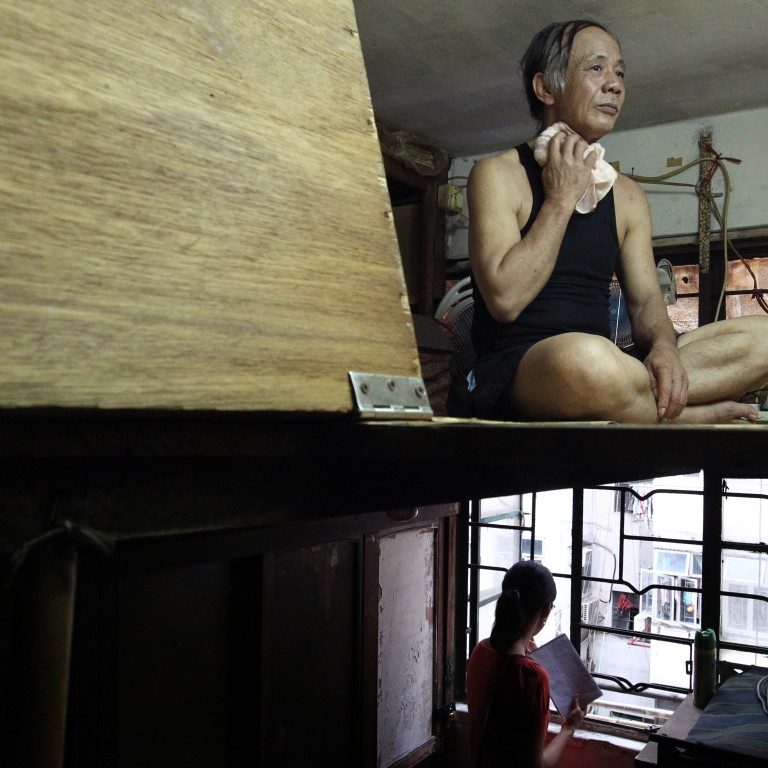
Hong Kong tenants living in subdivided flats pay more of their earnings to live in smaller units
Subdivided flats are getting smaller but rents keep rising, a Chinese University study found.
Researchers said the government should provide transitional housing for people living in crowded conditions while waiting for public rental flats, a process that is taking longer due to growing demand in recent years.
The university's Institute of Future Cities interviewed 66 households in subdivided flats living in seven districts over the past six months and compared their findings with a study commissioned by the government's Long Term Housing Strategy Steering Committee in 2013.
Researchers found the average rent-to-income ratio had increased from 29.2 per cent in 2013 to 41.1 per cent. But tenants were also being squeezed in terms of living space - the average area per person dropped from 67.6 sq ft in 2013 to 47.8 sq ft.
If tenants still lived in what were average-sized flats two years ago but rent and earnings were at the current level, 72.8 per cent of their income would be spent on rent. That figure jumps to an alarming 114.8 per cent for a five-person household.
Tenants therefore had to downsize even further to find affordable housing.
"The size is even below the minimum standard of 70 sq ft in public housing," said Edward Yiu Chung-yim, associate director of the institute. He said this was the only way tenants could survive as average rents increased from HK$29.10 per sq ft to HK$37.60.
The figures look grim compared with the average per capita size of 323 sq ft in Singapore.
With researchers measuring the size of each flat and verifying the figures with individual building plans, Yiu believed the study gave a more accurate dataset.
He urged the government to find short-term and long-term measures to ease the problem.
"Government should provide transitional housing to tenants who have been lining up for public housing up to three years," Yiu added.
He said there were about 700 vacant flats in total that could serve as transitional housing under the Urban Renewal Authority and various government departments. In the long run, the government should build more public rental flats in urban areas and source land from the URA and old housing estates, he said.
By the end of March, a total of 278,500 applicants were waiting for public rental flats, including 140,600 non-elderly single people, a group considered a lower priority under the government's current policy.
The Housing Authority said it took an average of 3.3 years for general applicants to be offered a flat, and 1.8 years for elderly applicants.

